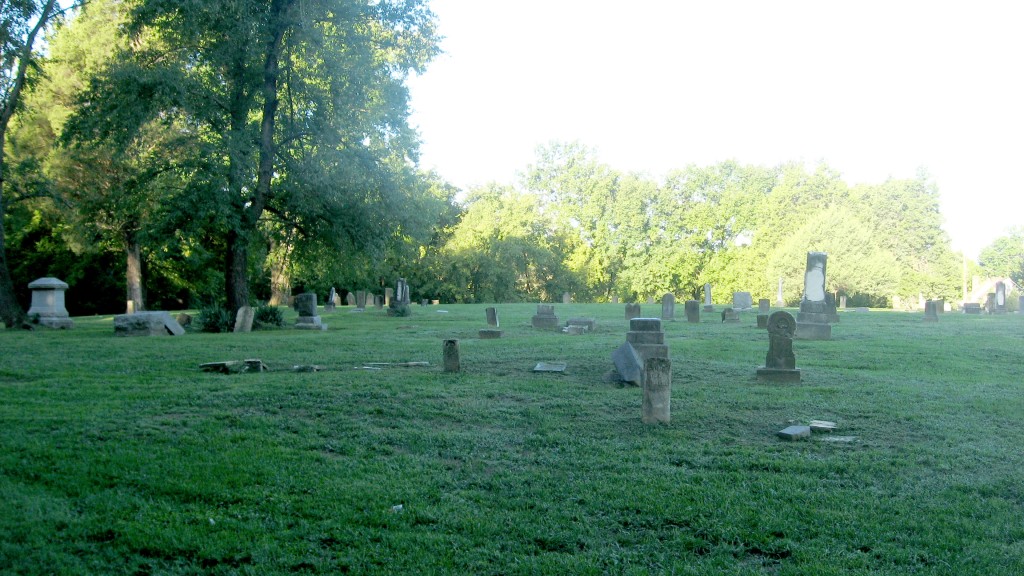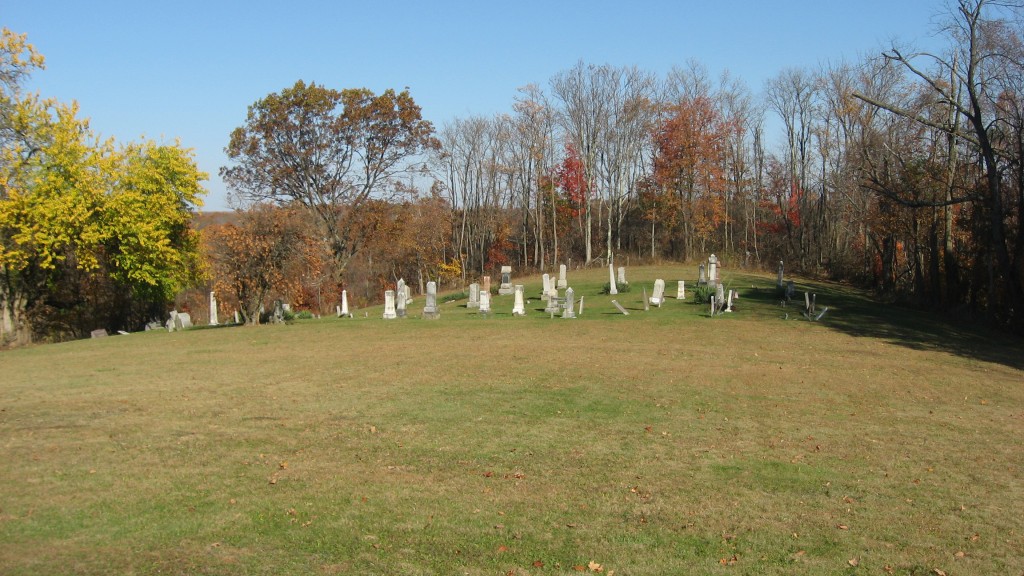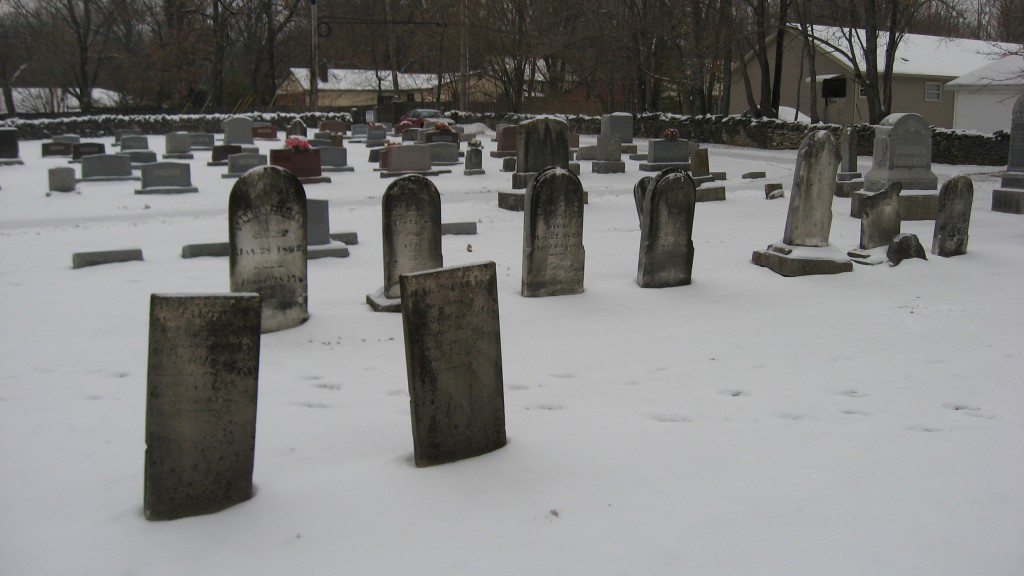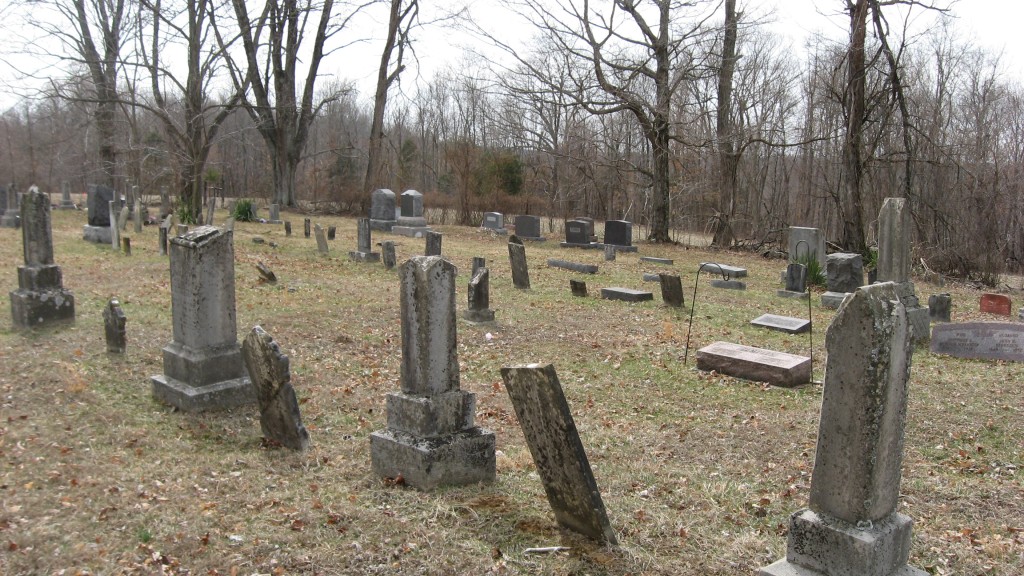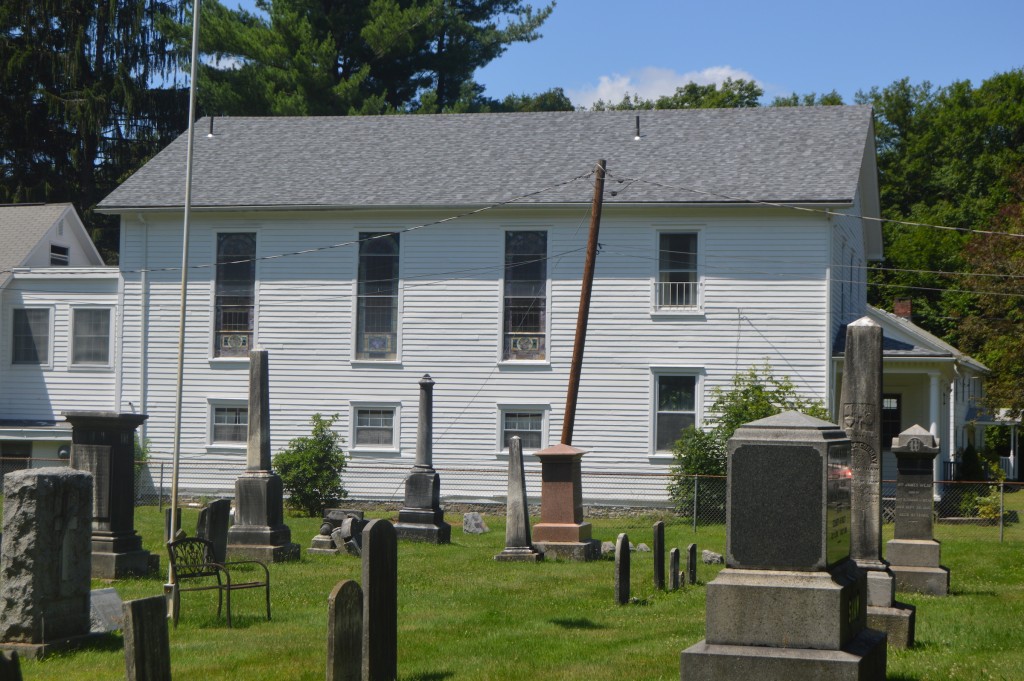You have free articles remaining this month.
Subscribe to the RP Witness for full access to new articles and the complete archives.
Many older Reformed Presbyterian churches have their own cemeteries, and several other cemeteries preserve the memories of congregations that no longer exist. Let’s look at a few cemeteries east of the Mississippi River.
The oldest RPCNA congregation is Coldenham-Newburgh, founded in Montgomery, N.Y. in 1748. The present church dates from 1838, by which time the adjacent cemetery had dozens of burials. One of the most prominent markers commemorates James R. Willson, pastor at Coldenham for 20 years. For his last 7 years, the eastern campus of the Reformed Presbyterian Seminary was located in Montgomery, and he was the sole professor.
Clarksburg, in rural Indiana County, was always one of Pennsylvania’s smaller congregations. The congregation was organized in 1824, and the first burial in their cemetery dates to 1815. The congregation closed circa 1918, two years after the final burial. Today, the cemetery sits atop a small hill by an intersection. Although it was largely ignored for many years, hillside erosion prompted the Department of Transportation to stabilize the site in 2020; and an accompanying archaeological survey found that unmarked graves may outnumber marked graves by more than 12 to 1.
RP settlers formed the roots of the Rose Point congregation outside Portersville, Pa., in 1806. The current building sits atop a bluff above the Slippery Rock Creek, and the cemetery sits on the hillside below the church. Among the early burials here are Thomas Willson, who walked to the 1833 Synod in Philadelphia (more than 600 miles round trip); James Blackwood, the first pastor; many members of the Fisher family, whose monument is visually prominent; and P. D. McCracken, who served five RPCNA pastorates over nearly 50 years. The cemetery has plenty of room and remains active.
A largely forgotten cemetery sits just off U.S. Route 22 in Londonderry, Ohio, hidden behind the local Methodist church. The Londonderry congregation was organized in 1822 and dissolved in 1912. Any church building once occupied by the congregation is no longer standing, so only the cemetery survives to mark their history. Members of the extended Blackwood family represent nearly 10 percent of the burials.
A society in Northwood, Ohio was organized as the Miami congregation in 1831. Members in nearby communities were later formed into separate congregations, but by 1946 all had merged into the present Belle Center congregation. The cemetery sits above one of the headwaters of the Miami River, next to the site of the original church building. Nearly 40 gravestones commemorate members of the Wylie family, 8 commemorate ministers, and a large marker commemorates Syrian missionary Martha Wylie. The earliest burial is a child who died in 1832. The cemetery’s peak activity occurred in the late 19th Century, but occasional burials continue today.
Founded in 1821, Bloomington was the most successful of Indiana’s early RP settlements. Its first church building and cemetery were both established within a few minutes’ walk of the house of the first pastor, James Faris. While later church buildings were constructed miles away, the cemetery remained active. Natives of South Carolina and Ireland are well represented, and the church’s antislavery stance is demonstrated by the presence of eleven Civil War veterans. Relatives and descendants of James Faris are a large proportion of the burials. Today, the cemetery is a community landmark. It is surrounded by an early dry-laid stone wall (“stone fence”), built without mortar in a locally common style, and its location at an important intersection makes it highly visible. A 2004 historic preservation survey deemed it likely eligible for listing on the National Register of Historic Places. Its size has prompted the trustees to limit the number of non-church members who can be buried there.
The Walnut Ridge Church in southern Indiana, like Bloomington, was founded in the early 1820s by South Carolinians. The congregation was badly weakened in 1840 when their pastor abandoned his charge and led many members out of the church, but it lingered until the Civil War era. The cemetery sits on the southern side of the heavily wooded Walnut Ridge, atop 200-foot cliffs. The earliest burial is Isaiah Reed, who died in 1819, and the defecting 1840 pastor is also buried there.
Illinois’ first RP church was founded in the settlement of Eden in 1823, and the members built a church in the middle of their new cemetery. While the congregation later moved to the nearby town of Sparta, the cemetery and church foundations remained at the old site. Many of the congregation’s early members had moved north to escape slavery, and natives of South Carolina and other slave states are a significant proportion of the burials. The cemetery was most active in the third quarter of the 19th Century, and new burials became rare in the 20th Century.
